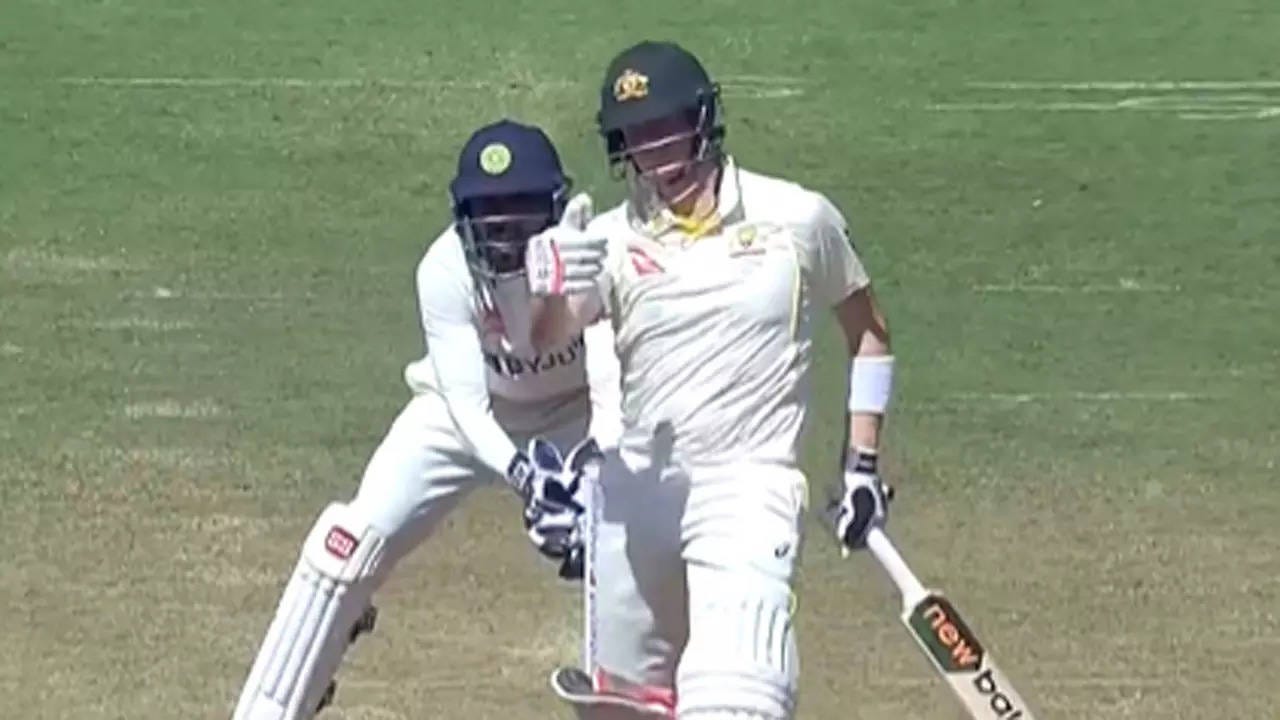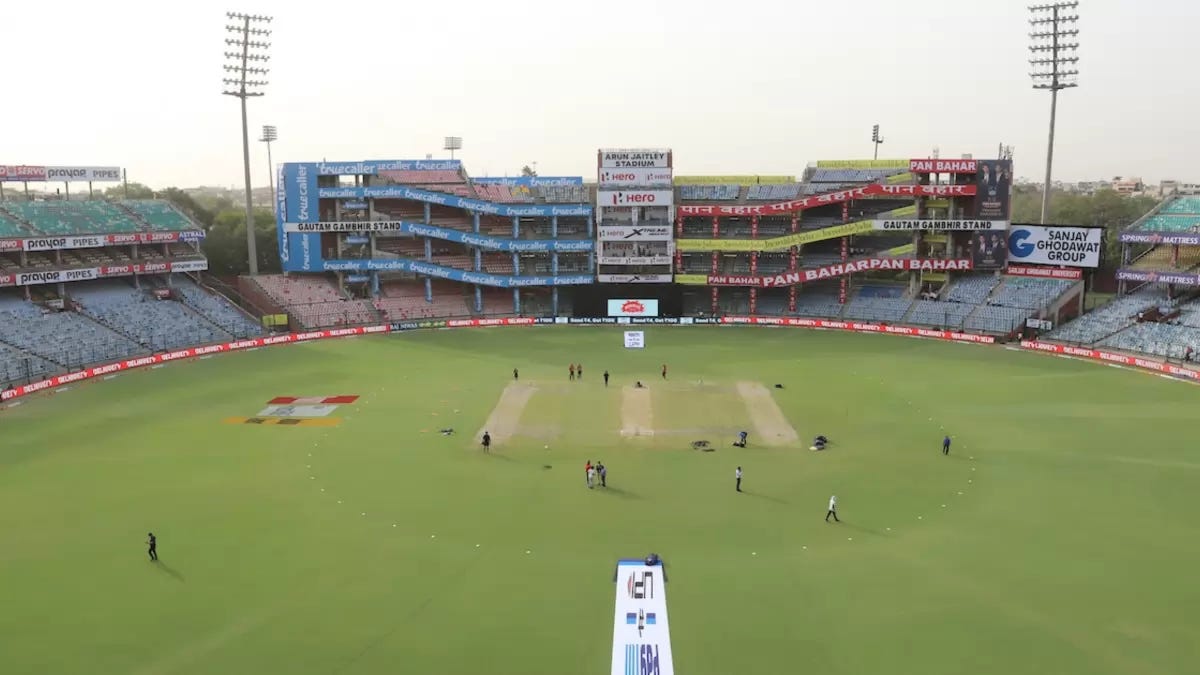A nightmare in Nagpur, or a Delhi reboot.
There’s little doubt Australia has work to do; some might ask, "Where do they start?" I’m a little more optimistic. First and foremost, at the top of the to-do list is getting injured players fit again. A significant step in the right direction.
Post Nagpur, It amazed me to read and listen to the flurry of negative comments from eminent past players. The Aussie backbenchers sounded off as if they had been asked to pay for lunch! Surely some solidarity could have been shown.
Oh NO. Leading the charge was, Allan Border, the father of modern Australian cricket. He demanded a return to more hard-nosed cricket. I'm curious what that is.
Nevertheless, Mr. Border is seemingly upset by Steve Smith’s appalling "thumbs-up" to Ravindra Jadeja. A champion batter was beaten in the contest by a champion bowler, and they entered into some by-play. Sacrilege. How dare Steve Smith betray his alma mater? Hilarious, not me, them!
And then, wait for it: there were calls for Andrew McDonald’s predecessor, Justin Langer to return to the front-benches. Boris Johnson like.
The defamatory post was quickly deleted, almost as quick as the authors penchant for telling us how it easy it is to take hat tricks in Test cricket!
SpeakingNick is a reader-supported venture. Free and paid versions are available. The best way to support me is by taking out a paid subscription.
So, put on your coach's hat and grab the whiteboard.
What do you do when your team is lapped in the first Test of what is arguably the most anticipated bilateral series in world cricket?
Both Indian and Australian fans alike were waiting in nervous anticipation. There is much to play for and a lot to lose.
Coach, Andrew McDonald, did exactly as he should. He called training. Yes, it was the day after submission, however, this was a legitimate course of action from management — I say this with the utmost sincerity.
After all, the Nagpur "horror-wicket" was still playing true — for the Indian batters.
So a "get back on the bike" centre-wicket practice was completely justified. And for those who prefer the security afforded by a meandering net session, well, there would be nets, and presumably accompanying “netters” (willing bowlers).
It was to be a “brave” Nagpur Sunday for the surrounded visitors.
Enjoying the read? If you feel like it, I’d love if you’d share this post with your friends! Or, if you received it from a friend, please forward to another.
Unfortunately, it was not to be; after all, this was India, where the left hand does not always speak to the right! A place where even the best-laid plans can go astray.
The coach’s best intentions turned to frustration as quickly as his team’s second innings ended the day before.
~~~~
Pardon the brief digression: a team being bowled out in a session is not normal, but a team being bowled out and following on in a session is another matter. The venue was Stanley Park, Blackpool — Lancashire vs. Derbyshire — nearly thirty years hence, and it turned out to be an amazing game. Mohammad Azharuddin played for Derbyshire. The rest can be digested here.
~~~~
Back to Nagpur and the Australians search for redemption.
Arriving early Sunday morning, the visitors were met by a centre wicket that had clearly consumed too much water Saturday evening, presumably in the wee hours of the morning celebrating the hosts' emphatic victory. And, to make things worse, the practice wickets had not missed the invitation either.
It’s not been missed that captain, Pat Cummins, has repeatedly asked for his charges to: "embrace the chaos of touring India," and to "expect the unexpected."
Here was their chance to reassure their captain’s wants.
So what happened in Nagpur? Aside from the blindingly obvious.
The obvious being a resounding beating by an innings and 132 runs in a little less than eight sessions.
Session-by-session analysis could be a clarifying way to quickly dissect what happened. And, an opportunity to confirm how far both teams' skill sets differed.
Day one: at lunch Australia were 2/76 (32 overs) — I’m offering a split verdict. The afternoon and evening sessions were won by India. At tea Australia were 8/174, and by the close of play India had progressed to 1/77 after dismissing Australia for a unsustainable first innings 177.
Day two: saw India clean sweep all three sessions. At lunch they were 3/151 and at tea 5/226, and a lead of 49. They stretched that advantage to 144 at stumps, closing on 7/321.
Day three: in the “Nightmare in Nagpur.” India was bowled out for a round 400, which saw Australia 223 runs adrift. Then the Ashwin/Jadeja demolition began and ended, almost in the same breath. Australia bundled out for their lowest Test total in India — 91, in just 32 overs. Eight more than Lancashire took.
An Australian advocate might argue vainly that they saw themselves at parity for one session (the first session) of this lopsided game with, Steve Smith and Marnus Labuschagne seemingly set to do as they do: bat long and profitably. The partnership offered just seven more runs before Ravindra Jadeja had Labuschagne walking past one, giving debutant Srikar Bharat his first Test dismissal, and a satisfying return to the bowling crease for Jadeja.
Also, think about this: from that point in the first innings, Australia lost 8/101 and then 10/91 in the second.
As an impartial observer, I would prefer to focus on the incumbent superpower in this part of the world — India. They look impenetrable.
Initially, I was sceptical about India’s third spinner: Axar Patel or Kuldeep Yadav. Axar’s inclusion sought to confirm their desire to play finger spinners only. And Axar provided a functional and effective alternative to Jadeja and Ravi Ashwin. Subtle variations in ball speeds and a persistent line targeting the stumps made Axar a challenging proposition for all the right-handers. Factor in his batting contribution, and you have a reliable third fiddle.
Similar to Axar, Mohammed Siraj demonstrated his ability to play the supporting role comfortably. Siraj is no stranger to success against Australia. Both he and Mohammed Shami comfortably out-bowled Australia’s quicks. I believe this is a part of the game where Australia’s openers have to arrest some early ascendency.
The only other Indian soft spot is the batting form of KL Rahul. Rahul is clearly a trusted lieutenant, as his recent form is average at best, yet there seems little concern over his place. India, internally, appears to be a trusting team. We will see how this plays out.
The captain, Rohit Sharma, had a wonderful game. His batsmanship was sublime, and he orchestrated his symphony to perfection.
And it would be great to read any comments you might have?
One closing comment on David Warner: I’m concerned his internal faith might be waning. The one constant throughout his career was self-belief. I really do hope to be wrong.
His preparation for this series was poor. BBL cricket and no time in the middle; the timing was off, and his footwork looked sluggish.
He also played both sides of the microphone. In mafioso circles, family comes first, above anything else; the consequences of compromising these values are well documented. At this moment in time, his working family is the Australian cricket team. Warner has always served his team admirably, and I urge him to continue a little while longer.
Mr. Warner, get after the new ball.







